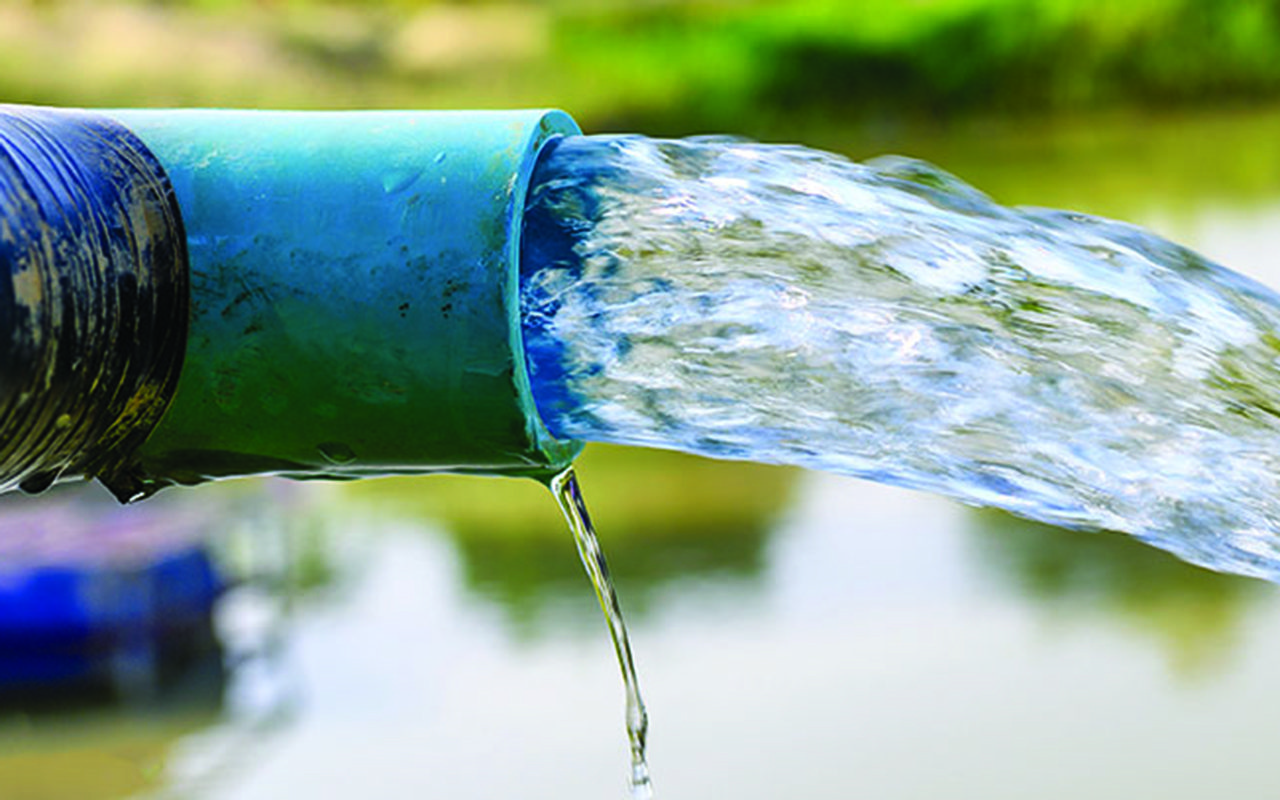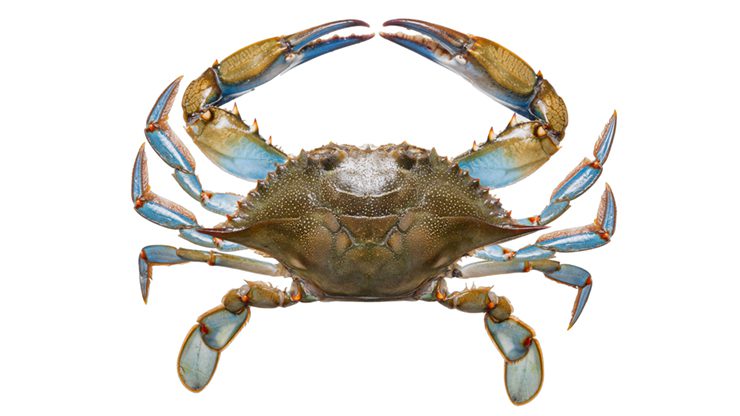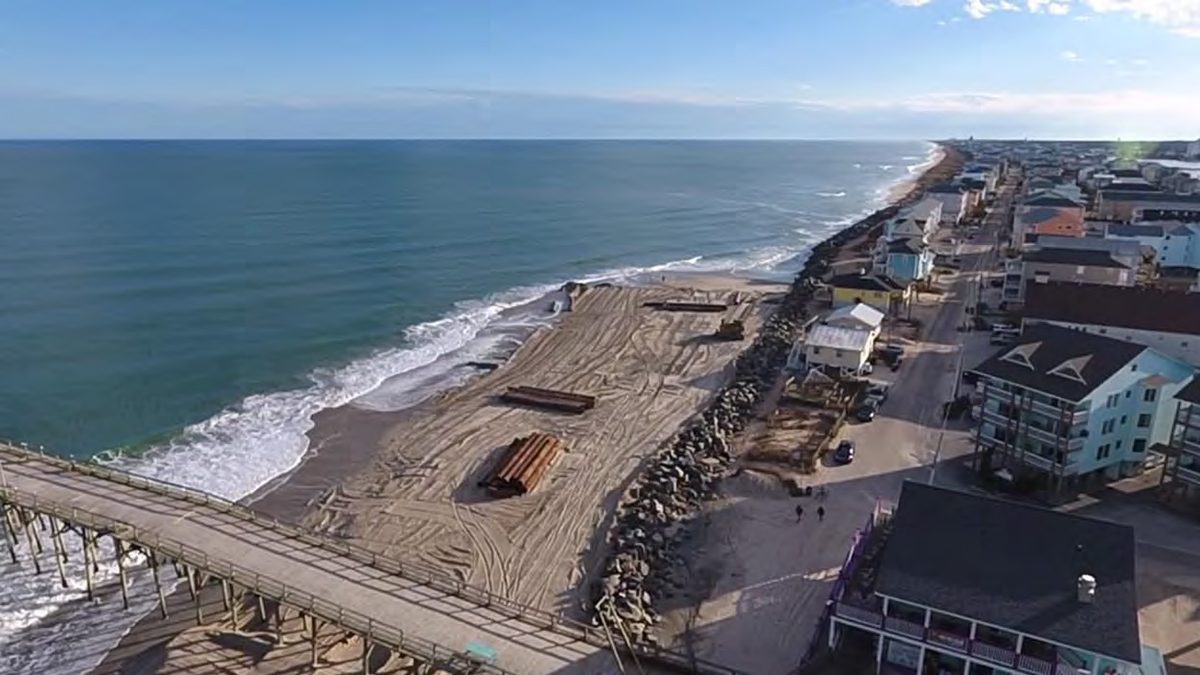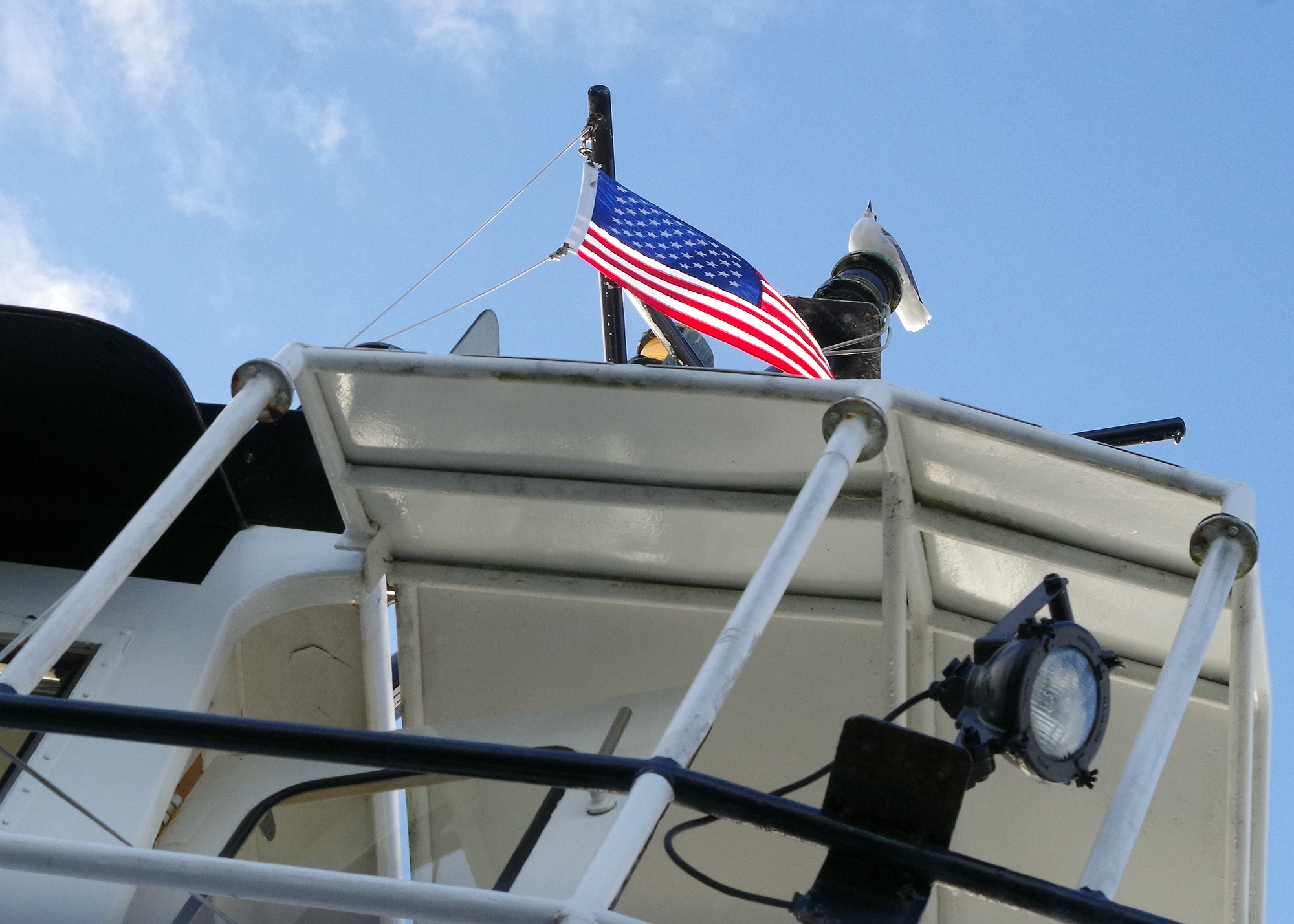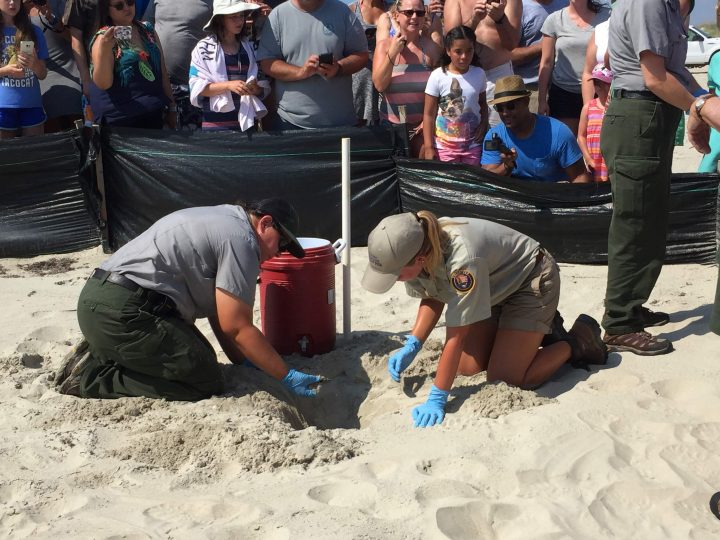
Reprinted from Ocracoke Observer
OCRACOKE — A chorus of “Aww!” went up through the crowd as the first loggerhead turtle baby was freed Tuesday morning during an excavation of a recently hatched sea turtle nest by Cape Hatteras National Seashore staff.
Supporter Spotlight
A tiny turtle, about the size of an adult palm, wriggled as it was placed in a bucket.
The National Park Service allowed the public to watch as they dug up and inventoried the nest about a quarter mile north of the Lifeguard Beach stand.
“After nests ‘boil’ (the term used for the nest hatching), we dig them up and inventory what’s hatched,” said Jocelyn Wright, lead park service biologist on Ocracoke. They gather the live babies and count the leftover eggs as part of their stewardship of the Seashore, she said.
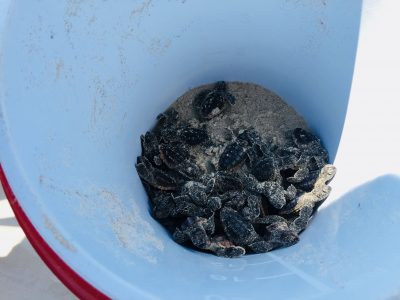
All along the beach, roped-off areas protect nests laid early in the summer by various sea turtles.
Before the beach is open to driving each morning, Park service staff ride the beach to check for the signs of turtle nests, telltale tracks from the ocean to spots near the dunes.
Supporter Spotlight
“There are six in this area,” Wright said about the number of roped-off areas visible at the Lifeguard beach.
Letitia Lussier, a seasonal park service interpreter, gave a play-by-play as Wright and the others dug about 2 feet into the sand to extract eggs and hatchlings still in the nest.
“When they hatch, they climb over each other to get out,” Lussier explained. “But it’s tough to crawl out of the sand without a ladder.”
Those babies that can’t get on the “ladder” remain behind.
She explained that a female loggerhead had crawled onto the beach in the middle of the night May 29, used her hind legs to dig a two-foot hole and laid her eggs. Then the mother left.
The nests hatch in 60 days and this one boiled on Aug. 2, Lussier said, But there always are eggs left over. Four days after nests boil, staffers dig up the nests. In this nest, some of the babies had died, but many survived.
“We lost count of the hatchlings today she said with a laugh as a staffer displayed a bucket of about two dozen writhing baby turtles. “There are just too many of them.”
Lussier said the surviving babies did so by feeding from the yolk still in their shells.
She said these youngsters would be released into the ocean in the dark, after the beach closes to driving.
Wright showed the bystanders leftover egg shells and allowed them to be touched.
“The shells are soft and contain a little air, like a basketball,” Lussier said.
Seashore staff have counted 41 nests on the Ocracoke beach this year.
“That’s half the nests we normally have,” Lussier said. “We’re hoping it’s just a down cycle, but we don’t know. Turtles are mysterious because they live in the ocean.”
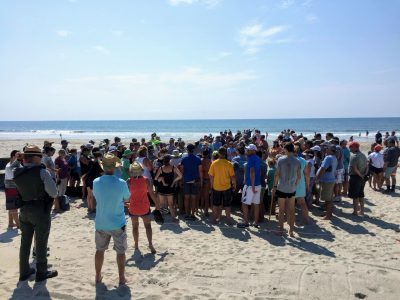
There are seven species of sea turtles worldwide, she explained, with loggerheads the most common.
As the excavation concluded, having counted 53 egg shells, Lussier admonished the crowd to manage its own trash, especially plastic bottles, grocery bags and balloons.
“Since the 1950s, plastic has started to pollute our world,” she said.
Sea creatures think plastic grocery bags are jellyfish, a prime food.
“Don’t use plastic water bottles, and pick them up — on the beach or the side of the road — when you see them,” she said.
“This was phenomenal,” Doug Hinkle of Chambersburg, Pennsylvania, told the park service staff as the crowd dispersed. “It made my whole vacation.”
A frequent island visitor, Hinkle said this was the first time he’d seen an excavation.
“I’m so impressed that they did this and let all of these families watch,” said part-time islander Traci Riggs. “It’s not only fun but it’s teaching these kids.”
“This was wonderful,” said Pam Leonard of Arlington, Virginia, about the excavation. “It’s inspiring and important.”
This story is provided courtesy of the Ocracoke Observer, a newspaper covering Ocracoke island. Coastal Review Online is partnering with the Ocracoke Observer to provide readers with more environmental and lifestyle stories of interest along our coast.



